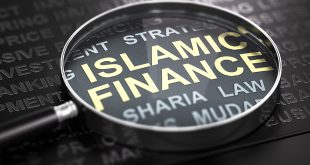Is there enough evidence to indict Ben Bernanke and Alan Greenspan on charges that they aided and abetted the banks and other financial institutions in the sale of fraudulent loans to investors?
That depends on whether there is sufficient proof to show whether the two men KNEW that the nation’s lenders were engaged in large-scale predatory lending and chose to do nothing. As we’ll see, both Greenspan and Bernanke were warned repeatedly about the mortgage/derivatives scam by credible professionals and industry regulators, but failed to act.
Here’s a definition of “aided and abetted” from the ‘Lectric Law Library:
“The guilt of a person in a criminal case may be proved without evidence that he personally did every act involved in the commission of the crime charged. …if the acts or conduct of an agent, employee or other associate of the person are willfully directed or authorized by the person, or if the person aids and abets another person by willfully joining together with that person in the commission of a crime, then the law holds the person responsible for the conduct of that other person just as though the person had engaged in such conduct himself.” Excerpt from The ‘Lectric Law Library http://www.lectlaw.com/def/a033.htm
Bernanke denies culpability in the meltdown–but at the same time– eagerly points out that the Federal Reserve is the chief regulator responsible for overseeing the “large complex financial firms that pose a threat to the stability of the financial system.” So, which is it? Does he accept responsibility or not? Here is a statement Bernanke made earlier in the week during an appearance before the Senate Banking Committee which may help to clarify the point.
“I think that stripping the Federal Reserve of supervisory authorities in the light of the recent crisis would be a grave mistake… we’ve learned from the crisis large complex financial firms that pose a threat to the stability of the financial system need strong consolidated supervision…. You need an institution that has a breadth of skills. It’s hard for me to understand why in the face of a crisis that was so complex and covered so many markets and institutions, you would want to take out of the regulatory system the one institution that has the full breadth and range of those skills to address those issues.”
Bernanke admits that the Fed is the ‘primary regulator’ that is responsible for “strong consolidated supervision” over “large complex financial firms that pose a threat to the stability.” If we accept his definition, than we must also accept that the Fed should be held accountable when it abuses its authority and puts the system at risk. The record will show that, at the very least, the Fed is guilty of criminal negligence in its role of facilitating the sale of fraudulent loans to homeowners and investors. The Fed consistently refused to use its authority to reign in the banks even when their activities pushed the system towards catastrophe.
I have put together a short list of the regulators and agencies that warned Bernanke and Greenspan prior to the Lehman meltdown. (There’s bound to be many I have missed) But, first, here is a brief summary of what caused the crisis by economist and author James K. Galbraith in a recent interview on New deal 2.0:
“The principal cause of the crisis was the dismantling of the system of regulation and supervision in the financial sector which had for much of the post-war period kept the most dangerous elements of that sector in check. In the absence of an appropriate system of effective supervision and regulation, what happens is that the actors in the system, who are intent upon taking the greatest degree of risk — including actors who are intent upon using fraudulent methods to increase their returns — come to dominate parts of the system. As they do that, the general methods of assessing performance in the market, specifically stock-market valuations, become counter-productive. That is to say, they invariably reward the worst actors, while they force more traditional actors, who are still respecting the old norms of conduct, into a competitively disadvantaged position. Thus the bad actors, the fraudulent actors, and the speculative extremists quickly take over.
That is what happened specifically in the origination of mortgages in the United States in the middle part of the last decade. You had a transition from a traditional method of issuing mortgages to people who could be reasonably expected to service them, to a method of originating mortgages that were sold off immediately, that were rated in a way that permitted them to be bundled and sold to fiduciaries, and where the issuer had no interest in whether the borrowers could pay or not. In fact, in some ways the lenders actively preferred people who did not intend to pay, because they could then inflate the value of the loan and earn a larger fee upfront for doing it. And in this way, not only was there a large segment of the market that was explicitly corrupt, but the equity value of homes all across the country was compromised. When these practices collapsed, so too did the home values not only of people who had bad mortgages, but also those for many people who had good mortgages, good incomes and perfectly good credit.
The result of that was a general slump in activity. The wealth and financial security of much of the American middle class disappeared. So far about a quarter of the measured wealth of the American middle class has disappeared – about $15 trillion of $60 trillion. That’s bound to have a fantastically traumatic effect on people’s consumption behavior and on their ability to get new good credit. Even if they wish to continue to extend the past pattern of borrowing in order to finance activity, they can’t do it. So, this is a very big problem. It starts with a failure to supervise and regulate the financial system, and flows on to the reaction of the broader population, which is to protect their remaining assets, to become extremely adverse to taking ordinary business and consumer risks.”http://www.newdeal20.org/?p=7981
So, Galbraith believes that the main problem was “the dismantling of the system of regulation and supervision” over the last quarter century. This view is now widely shared by industry experts and economists. ( That means that deregulation was a more significant factor in the crisis than the Fed’s low interest rates.) The problem with this theory is that it tends to obscure the fact that the Fed STILL had the authority to step in and prevent people from getting ripped-off. Thus, “deregulation” was not the problem as much as the “failure to regulate”. (which Galbraith also notes) This is an important distinction. The financial crisis was not caused by a system malfunction; it was caused by men perpetrating a crime.
Bernanke and Greenspan had a birds-eye view of everything that was going on in the market, that is, mortgage origination, off-balance sheet operations and securitization. They knew that homes were being sold to applicants who had no way of servicing the debt. They knew that hybrid mortgages were developed with the clear intention of increasing the quantity of mortgages without regard for the creditworthiness of the borrower. They knew that the lenders didn’t care whether the loans blew up or not since they made their profits on upfront fees. They knew everything, and refused to act.
As it happens, many other people knew what was going on, too, but either kept quiet or were ignored by the media. Even now, when we have a much better understanding of what really took place, the media still frames the crisis-narrative in terms of a natural disaster–like an earthquake–that no one could have anticipated or prevented. This is nonsense. The housing bubble was 100% man-made. The Fed could have taken action at any time to stop the bubble from getting bigger but, instead, became the biggest cheerleader for dodgy loans and garbage mortgage-backed securities.
The media has succeeded in concealing the facts and deflecting the blame from the real perpetrators. As former bank regulator Bill Black said in a recent interview with Paul Solman on PBS News Hour, what is most shocking about this particular crisis is the appalling lack of accountability.
ZERO INDICTMENTS, ZERO CONVICTIONS
William Black: “In the savings and loan crisis… we had over 1,000 convictions of senior insiders…. At this stage among the subprime lending specialists, we have zero convictions. We have zero indictments.”…”In September 2004, the FBI began publicly warning that there was an “epidemic” of mortgage fraud, and it predicted that it would produce an economic crisis, if it were not dealt with. The FBI has also said that 80 percent of the mortgage fraud losses occur when lender personnel are involved. So, Fitch looks at a small sample of these loans, finally, in November 2007….And what did they find? They said…that there was the appearance of fraud in nearly every file we examined. And they said that normal underwriting would have detected all of those frauds.
So, this is coming from the lenders overwhelmingly. They created incentive systems for the loan brokers and the loan officers that were based overwhelmingly on volume, and nothing on quality. We know that they gutted their underwriting standards. We know that you got in trouble if you were moral and tried to be a good officer and protect the organization from loss.” (PBS News Hour)
Repeat: The FBI KNEW there was an “epidemic” of mortgage fraud as early as 2004. Ergo: The Fed knew. Greenspan knew. Bernanke knew. And both chose not to perform their regulatory duties to stop the swindle from continuing.
And the FBI wasn’t the only one who knew either. In testimony just last month before the Financial Crisis Inquiry Commission (Jan 14, 2010) FDIC chairman Sheila Bair confirmed that she not only warned the Fed of what was going on, but cited particular regulations under which the Fed could stop the “unfair, abusive and deceptive practices” by the banks. Here is a excerpt from her damning testimony:
“PROBLEMS IN THE SUBPRIME MORTGAGE MARKET WERE IDENTIFIED WELL BEFORE MANY OF THE ABUSIVE MORTGAGE LOANS WERE MADE. A joint report issued in 2000 by HUD and the Department of the Treasury entitled Curbing Predatory Home Mortgage Lending noted that a very limited number of borrowers benefit from HOEPA’s protections because of the high thresholds that a loan must exceed in order for the protections to apply. THE REPORT ALSO FOUND THAT CERTAIN TYPES OF SUBPRIME LOANS APPEAR TO BE HARMFUL OR ABUSIVE IN PRACTICALLY ALL CASES. To address these issues, THE REPORT MADE A NUMBER OF RECOMMENDATIONS INCLUDING THAT THE FEDERAL RESERVE USE ITS HOEPA AUTHORITY TO PROHIBIT CERTAIN UNFAIR DECEPTIVE AND ABUSIVE PRACTICES BY LENDERS AND THIRD PARTIES. During hearings held in 2000, consumer groups urged the Federal Reserve to use its HOEPA rulemaking authority to address concerns about predatory lending. Both the House and Senate held hearings on predatory abuses in the subprime market in May 2000 and July 2001, respectively….”
Naturally, Bair’s testimony was ignored by the media.
So, the FBI knew, the FDIC knew, Fitch ratings knew, the Fed and Treasury knew. Was their anyone else who warned Greenspan and Bernanke about what was going on?
Yes, ex-Fed chairman Alan Greenspan’s good friend Ed Gramlich cautioned him on the surge in predatory lending that was apparent as early as 2000. Here’s an excerpt from the Wall Street Journal:
“Edward Gramlich, who was Fed governor from 1997 to 2005, said he proposed to Mr. Greenspan in or around 2000, when predatory lending was a growing concern, that the Fed use its discretionary authority to send examiners into the offices of consumer-finance lenders that were units of Fed-regulated bank holding companies.
“I would have liked the Fed to be a leader” in cracking down on predatory lending, Mr. Gramlich, now a scholar at the Urban Institute, said in an interview this past week. Knowing it would be controversial with Mr. Greenspan, whose deregulatory philosophy is well known, Mr. Gramlich broached it to him personally rather than take it to the full board.
“He was opposed to it, so I didn’t really pursue it,” says Mr. Gramlich. (Wall Street Journal)
So, Greenspan was even warned by a close friend and fellow Fed governor and STILL refused to act? And Congress still hasn’t launched an investigation?
And, then there is this from Elizabeth MacDonald at Fox News in an article titled “Housing Red flags Ignored”:
“One of the nation’s biggest mortgage industry players repeatedly warned the Federal Reserve, the Federal Deposit Insurance Corp. and other bank regulators during the housing bubble that the U.S. faced an imminent housing crash….But bank regulators not only ignored the group’s warnings, top Fed officials also went on the airwaves to say the economy was “building on a sturdy foundation” and a housing crash was “unlikely.”
The letters, obtained by Fox Business, were sent in 2005 and 2006 before the housing bubble burst.
As it pleaded with bank regulators to stop subprime lending abuses, the Mortgage Insurance Companies of America [MICA] pointed out the red flags in analysis from the bank regulators’ own staffers as well as the likes of Bear Stearns and Lehman Brothers, three years before these two Wall Street giants collapsed under the weight of bad mortgage bets.
Mortgage insurers are “deeply concerned about increased mortgage market fragility, which, combined with growing bank portfolios in high-risk products, pose serious potential problems that could occur with dramatic suddenness,” warned Suzanne Hutchinson, top executive at the Mortgage Insurance Companies of America, in 2005. Failure to adjust bank underwriting, reserves and capital to account for this growing risk “means that downturns from credit and/or interest rate events–let alone shocks–will be far more severe than” if precautions are taken, Hutchinson noted, adding that what is “disturbing to us is the fact that recent trends could lead to sudden increases in foreclosures.” ( Elizabeth MacDonald, “Housing Red flags Ignored”, FOX Business News)
Even the mortgage insurance companies knew what was going on. Everyone knew. The biggest mortgage-looting operation in history, and no one even bothered to cover their tracks. What incredible arrogance.
Finally, there’s this tidbit from an op-ed published in the Washington Post in 2008 by former New York governor Eliot Spitzer who accused the Bush Administration of being a ‘partner in crime’ in the subprime mortgage fiasco. Spitzer avers that the OCC launched “an unprecedented assault on state legislatures, as well as on state attorneys general and anyone else on the side of consumers.” Here’s a clip from Spitzer’s article:
“In 2003, during the height of the predatory lending crisis, the Office of the Comptroller of the Currency (OCC) invoked a clause from the 1863 National Bank Act to issue formal opinions preempting all state predatory lending laws, thereby rendering them inoperative. The OCC also promulgated new rules that prevented states from enforcing any of their own consumer protection laws against national banks. The federal government’s actions were so egregious and so unprecedented that all 50 state attorneys general, and all 50 state banking superintendents, actively fought the new rules.
But the unanimous opposition of the 50 states did not deter, or even slow, the Bush administration in its goal of protecting the banks. In fact, when my office opened an investigation of possible discrimination in mortgage lending by a number of banks, the OCC filed a federal lawsuit to stop the investigation.”(Washington Post)
Is there any doubt that the Fed knew exactly what the Bush administration was up to? Is there any doubt that the OCC’s actions resulted in tens of thousands–if not millions–of homeowners losing their homes to foreclosure?
There’s no doubt at all. People were getting fleeced in broad daylight. As the primary regulator responsible for overseeing the financial system an preventing “unfair, abusive and deceptive practices”, the Fed could have intervened at any time and stopped the predatory lending and exploitation. Instead, they sat on their hands and let the larceny continue uninterrupted, which proves that Greenspan and Bernanke are either criminally negligent in failing to execute their regulatory duties or complicit in aiding and abetting the banks and other financial institutions in the sale of fraudulent loans to investors and homeowners. Which is it? There needs to be an investigation to find out.
Post Disclaimer | Support Us
Support Us
The sailanmuslim.com web site entirely supported by individual donors and well wishers. If you regularly visit this site and wish to show your appreciation, or if you wish to see further development of sailanmuslim.com, please donate us
IMPORTANT : All content hosted on sailanmuslim.com is solely for non-commercial purposes and with the permission of original copyright holders. Any other use of the hosted content, such as for financial gain, requires express approval from the copyright owners.
 Sri lanka Muslims Web Portal Sri Lanka Muslims News Center
Sri lanka Muslims Web Portal Sri Lanka Muslims News Center



